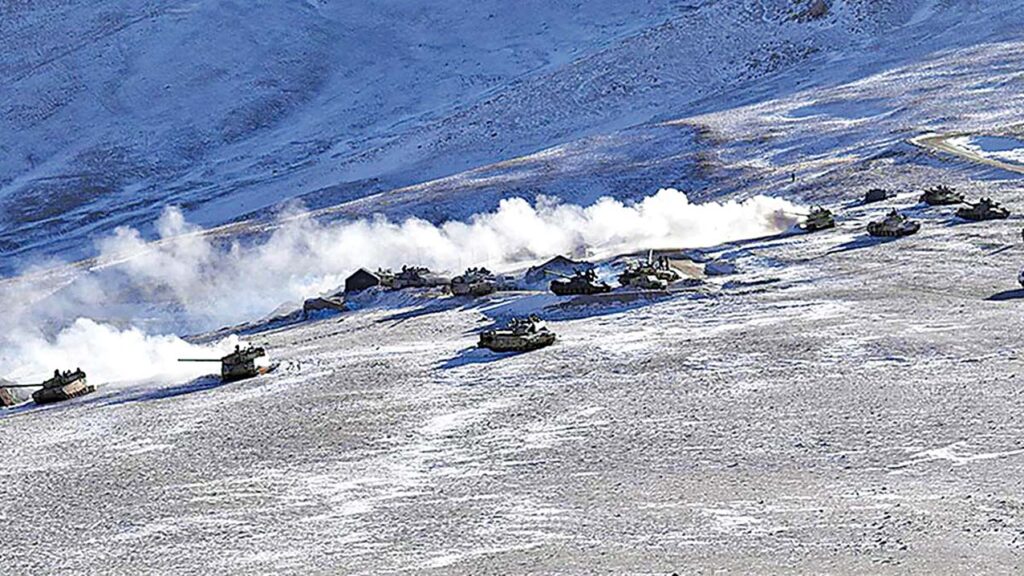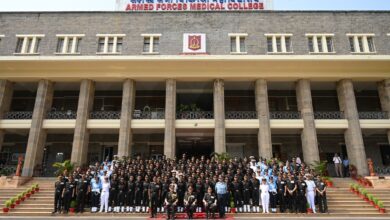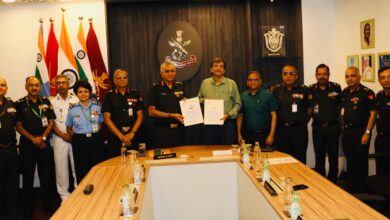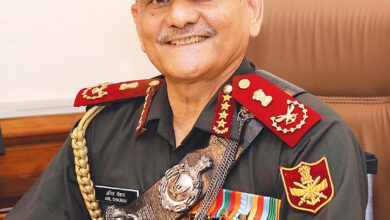It is crucial for India to embrace multi-domain operations
By Air Vice Marshal Manmohan Bahadur VM (Retd.)
If the brawls at Pangong Tso, Galwan and Yangtse and the thrust required towards MDO are yardsticks to go by, strategic minds have a plateful of imperatives to address
New Delhi, January 4. The India-China skirmish on the Arunachal border has brought the Chinese threat on the front burner again making Foreign Minister Mr Jaishankar accept that to counter it “..we have a deployment of the Indian Army…that we have never had.” The threat had never decreased but had recessed in public consciousness due the mundane issues of electioneering, bridge collapses, yatras, G-20et al. That such low-level and geographically-restricted clashes will keep recurring is a given; but what this should not do is to lull us into a complacent mindset that accepts such clashes, where the Indian jawan gives back more with sticks and fisticuffs than what he receives, as the likely future conflict scenario with China. The threat, actually, is at the other extreme of technical advancement –in the concept of Multi Domain Operations (MDO).

The term MDO has entered India’s military lecture circuit big time; however, it is being bandied about loosely, with its true characteristics and import being understood by few. MDO is just not actions in the land, sea, air, cyber, space and electromagnetic spectrum. MDO comprises operations conducted across multiple domains and contested spaces through convergence of capabilities to overcome an adversary’s strengths by presenting it with operational and/or tactical predicaments. In layman terms it means having a common operating picture across all domains which forms the basis to decide the best tool to address a given task. Hence, it is not one service using capabilities in multiple domains to do a task (as is happening now) but the best positioned and capable operator of any service to do it across any domain. Thus, an Army coastal missile battery could be tasked to strike an enemy naval vessel detected by the radar of an air force aircraft or an air force’s armed UAV on an ISR mission diverted to use its weapons against an armour concentration detected by a naval/civilian satellite. In simple terms, the MDO architecture uses any sensor and the best positioned shooter to accomplish objectives; the technical complexity and the command, control and communication (C3) structure required can well be imagined.
MDO and its C3 structure would have inputs from all sensors to come up with an optimum engagement solution using artificial intelligence. This demands three things. First, all sensors (and other information input sources) must be capable of being hosted on the MDO architecture. Second, all solution providers (executers) must be able to receive inputs and instructions from the MDO C3 structure and carry them out. And third, if the link to the main structure is not available (say, jammed by the enemy), then the mission command characteristics of distributed control would come into play so that operations continue.
Complicated it sure is, for one is talking of pioneering technologies that only nations with a developed scientific base and financial standing can afford. It would require a de novo look at doctrine, planning, acquisition, staffing and training. This raises a doubt– does this affect India or is it a first world problem? Should New Delhi be pouring money and resources into an American concept (being progressed by them aggressively for the past decade) that may not concern us? The answer comes easy when one considers that China, which is attempting to match US military power, is not lagging far; it is closely watching the Russia-Ukraine conflict where Western specialists are helping Ukrainians utilize the power of algorithms to fuse reconnaissance from space and chose the best shooters to strike Russian targets. As a Washington Post article puts it, “The Ukrainians are fusing their courageous fighting spirit with the most advanced intelligence and battle-management software ever seen in combat;” this is MDO, in an abridged form, in action. India, if left behind, would be deterred by denial during peacetime itself as Beijing, which has the technology and finances, masters it. India has no choice but to embrace MDO too; a four‑pronged strategy is suggested.
First, in the short-term, traditional physical domains must be stabilised, with critical deficiencies of the services being plugged. Second, our C3 networks need to be hardened and protected against cyber threats; equally important is to continue to link and synchronise them so that seamless exchange of data is ensured. Third, for the long term, a pilot project must be started now so that the true challenge of creating an MDO environment is grasped; presently, it’s just western literature driving theoretical discussions in the seminar circuit. The pilot project would identify the technologies required and, equally importantly, an idea of the monies necessary. And finally, to get the fundamentals of multi‑domain operations right it is vital to train and educate personnel, starting now; incidentally, the USAir Force has a one year‑long training course ongoing to help develop, “….critical thinking and problem solving skills at the operational level of war” amongst Joint All Domain Specialists, as the trainee officers would be called.
Technology has changed the face of war in one’s lifetime. History is witness to the perils on the battlefield if scientific advancements are overlooked. Battlefields too have changed from physical brawls to cyber and long-range precision strikes. But, err…if the recent brawls at Pangong Tso, Galwan and Yangtse and the required thrust towards MDO are any yardsticks to go by, then strategic minds at the higher levels of the military and government have a plateful of imperatives to address. This may not be an era of war, as someone famously said recently, but homilies are for politicians and not for professionals; the proverbial powder must not only stay dry but be upgraded in time.
(The author is former Addl Director General, Centre for Air Power Studies; views are personal).
This story has first appeared in The Hindu.





